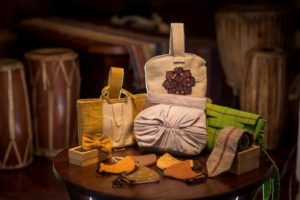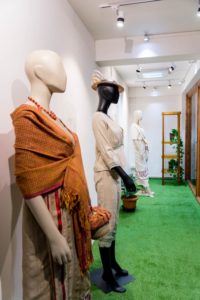I was hearing the sound of a stringed pluck instrument indistinctly from the side of the hills. The rhythmic adjuncts of Ryndia made it all musically driven. The sweetness of the sound from the Duitara (two-stringed plucked instrument) with old lady’s melody brings back my memory of youthful days. The lizard skin that covered the bowl-shaped resonator produced monophonic effect (drones) at my stilt house. It is actually a video “Ryndia – the ancient story of weaving” from the Department of Textiles, Government of Meghalaya, uploaded on a social networking site by our own proud social activist Patricia Mukhim.
People of lower Assam (Kamrup and Goalpara) predominantly play Dotara for folk music so does the neighbouring Ri-Bhoi District of Meghalaya, West Bengal, Bihar and Bangladesh. Despite geographical boundaries, we resemble a sense of cultural similarity with ethnic heritage. I listened carefully with English subtitles, saying a tale about the thread that makes a wonderful story. Ryndia is the thread of life and rhymes of Umden-Diwon Eri peace silk village of Meghalaya. In Assam, it is concentrated in Palasbari, Goalpara, Kokrajhar and Udalguri. The shades of exquisite folds of Eri silk glorified the ancient times of such organic beauty to behold.
The old story needs to be told on how the thread originated. The fluffy Eri is found in North East India and some parts of China and Japan. As we grew up in remote rural areas, we came across larva worms growing by feeding on nutritious Castor (Era), Kesseru, Barpat, Topioca, Gulancha, Gamari and Payam leaves. Adult Silk Moths then pierced the cocoon and come out. It is harvested to be spun where our Aita (grandmother) treated it so delicately; packed the worm that is gently extracted from the nest. After boiling, the thread is processed followed by opening, tapping and drying on the baskets. It’s one of the finest threads beyond history’s reach where women have used it to spin their economic dreams into lovely coloured shawls.

Eri Silks were used abundantly in Kamrup during Kalika-Puran from the historical documents of Kalhan’s Raj Tarangini, Kautilya’s Arthasastra and Harshacharit. The use of white Eri and golden Mugasilks in Kamrupa Kingdom was written by Chinese traveller Huien Tsang. With Meghalaya (18MT), Nagaland (18MT), Arunachal Pradesh (2MT) and Manipur (1MT), Assam alone contributes several folds (142 Metric Ton) in raw Eri silk production with less technological intervention. Sericulture and weaving are an essential legacy of the North East people. They continue weaving an ageless silk legacy.
The story remains the same even today. It is purely organic with natural ingredients that are used for dyeing. We saw Aita’s careful weaving of just one piece of Eri shawl at a time, and it is made for only senior people that is used during worship or celebrations. The magic and the flicker of warmth were the stories of our winter evenings, while she did the art of hand spinning into Eri thread. We got mesmerized by her practice of the traditional art of drop spindle spinning and tried hard to learn some weaving lessons of that ancient craft from grandma at home, but failed to produce a single yarn out of discontinuous filament of cocoon.
It is a common sight in the villages where women spinners would gather together as a community. The great pleasure and satisfaction came from their re-enaction of the activities that have been spun by our ancestors for 7,000 years from the valley of the Nile. The humid climate of North East India is very favourable for the Eri culture. It’s called the silk of the poor in Assam. There is an old saying “Dairpani, erirkani” which implies that while yogurt cools, Eri cloth provides warmth. Nevertheless, the silk gives the comfort of cotton and warmth of wool. The more it is worn, the softer it gets.

The texture of Eri silk is profoundly beautiful as it is woven with hand spun yarn. Eri fibre creates a beautiful natural off-white colour. The ancient fibre is very slow to spin Eri with a spindle. While rearing of cocoon is a family affair for males, all females in a family dominate the weaving livelihood. Now plant based natural colour dyes also used. It is washable and incredibly wrinkle-free.
With changing times/trends and the advent of the spinning mills, the indigenous silk fabric is now fashioned into exquisite saris, mekhla chadors, salwars, scarves and dresses. The video has beautifully shown how the thread comes, its process, dyeing and weaving to actual fabric wearing. The soulful music was soothing. The earnestness and passion for music with which women were spinning thread was music to my ears. The culture of the Khasi Ryndia is truly reflected in Assamese Eri Silk. Ryndia is certainly a thread of life which resonates with the rhythm of the hills of Meghalaya and glorifies an ancient culture.




